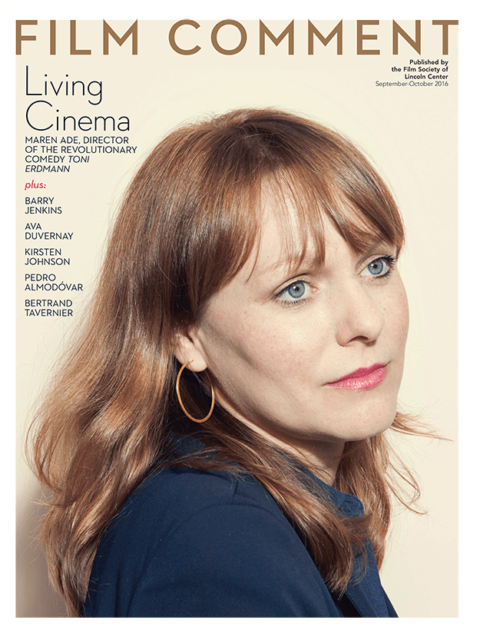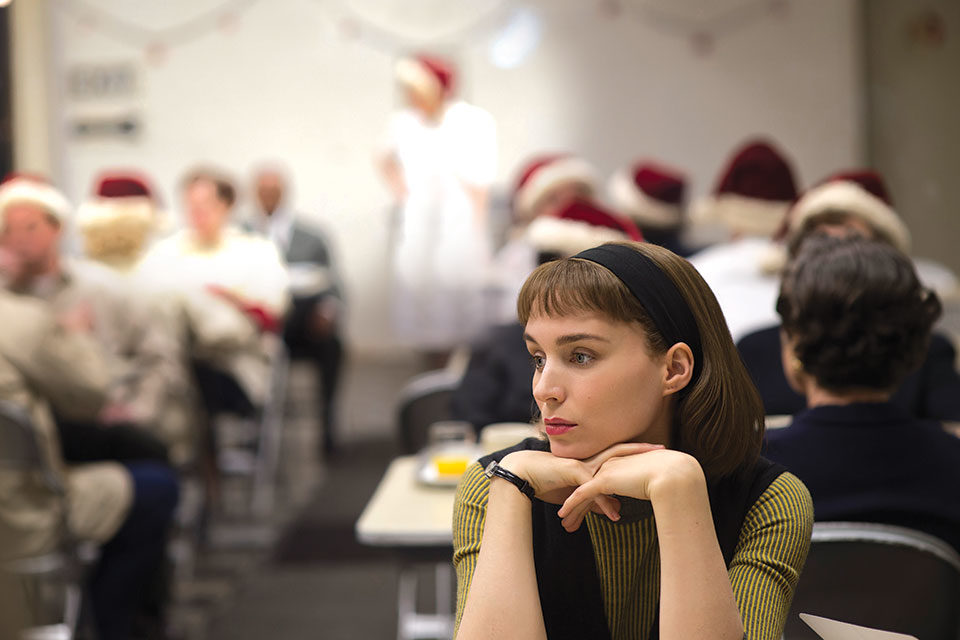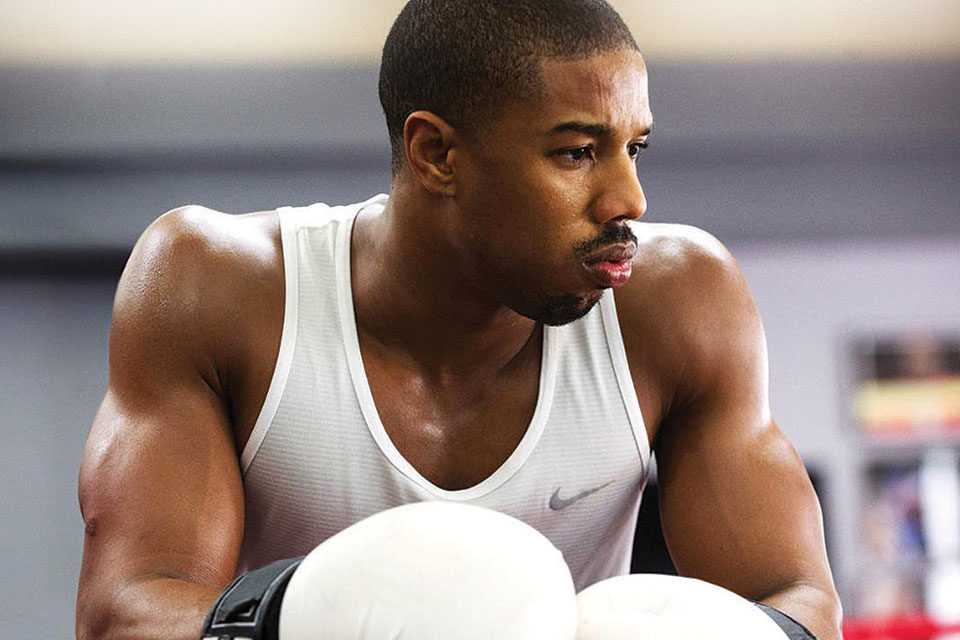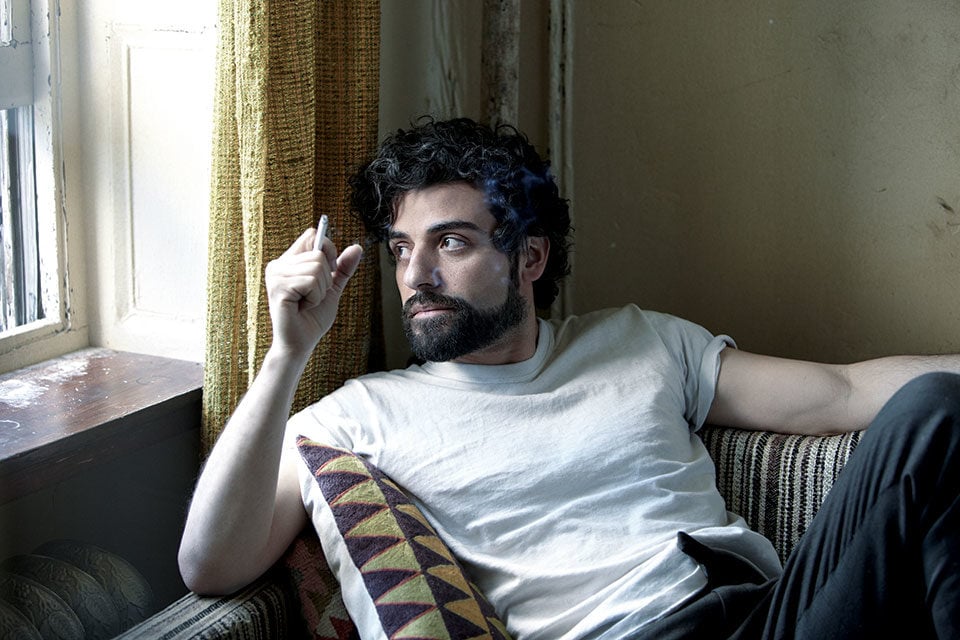By Shonni Enelow in the September-October 2016 Issue

The Great Recession
Restrained but resilient, a style of acting has taken hold that speaks to an era’s anxieties
It’s impossible to talk about acting without talking about culture. The relationship between cultural performance and professional performance is symbiotic: actors imitate what they see in the world, and non-actors in turn respond to and (consciously or unconsciously) imitate what they see on the screen. This is why it’s notoriously difficult to analyze film acting, even putting aside the considerable challenges of isolating it from other elements like direction, cinematography, and editing. Film acting is built from the very stuff of social life: norms of behavior, standards of interaction and communication, communally legible gestures, and personality tropes and dynamics. But if this poses a challenge for the critic, it’s also the reason acting styles, taken in the aggregate, are such unusually good barometers of cultural modes, themes, and ideas, whether they respond to prevalent motifs or are generated themselves.

From the September-October 2016 Issue
Also in this issue
For instance, what, in the United States in 2010, made a then-unknown 19-year-old Jennifer Lawrence so riveting in Winter’s Bone, the film that vaulted her—now the highest paid actress in Hollywood—into public view? For most of Debra Granik’s film, her face barely moves. As Ree Dolly, a Red State version of an American archetype (the indomitable rural heroine, self-reliant defender of the hearth), Lawrence gave an intensely contained performance, built from the smallest expressions: the tiniest movement of her cheekbones when she tells her neighbor she has nothing to say to the police, the tensing of her brow when she insists an unwilling person tell her what she needs to know, the cracks of disgust around her mouth when a squirrelly relative offers her drugs. It’s a subtle interpretation in an unsubtle film: comforting because Ree is so capable, so brave, that her heroism redeems the poverty and dysfunction around her, but unsettling because, as if subconsciously resisting that mawkishness, Lawrence gives us so little to attach our sentimentality to. Instead of emoting, she tightens and focuses her gaze. When she speaks, her jaw is set; her delivery slides between hostility and contempt. Only once does she break open, in a revealing scene in which Ree begs her catatonically depressed mother to help save their house from the bail bondsman. Kneeling in front of her mother, who looks away, Lawrence’s eyes widen and tear. No big gestures, no sudden movements—her jaw is still set, her face is still quiet—but now, instead of defensive, her stillness feels frozen, terrified. “Momma, look at me,” she pleads, “Mom, look at me. Please help me this one time.”
What about this Oscar-nominated performance resonated so strongly? And what was it about that particular scene between mother and daughter that encouraged director Gary Ross to all but re-create it in the first installment of The Hunger Games, the studio franchise that launched Lawrence to superstardom? Lawrence is Katniss Everdeen, another inexpressive rural heroine from the films’ concentration camp Appalachia; the similarities between the characters of her first two star turns has been cited regularly, but the echo of the mother/daughter scenes may have escaped most viewers’ notice. It appears in The Hunger Games as Katniss’s hallucinated memory during the gladiator-style Games, for which children are drafted to fight to the death in a computer-generated arena for the televised viewing pleasure of the regime’s elite; just like Ree, Katniss kneels in front of her paralyzed mother and demands, “Look at me. Mom, look at me! Don’t just sit there, say something—please say something!”

The Hunger Games
If this is the new American movie teenager, she’s very different from the ones we’re used to. Since they started showing up on screen after the Second World War, the teenagers of American film have fought to unshackle themselves from repressive authority and express their true selves: “You don’t see me for who I really am” has been their cri de coeur. This drive was spectacularly dramatized by the realist acting style that overtook American film in the postwar era known as Method acting and based on the psychoanalytically inflected acting theories of Lee Strasberg and Elia Kazan (who based theirs on the theories of Russian theater director Constantin Stanislavsky, but gave them a specifically American cast). When James Dean cried, “You’re tearing me apart!” in Rebel Without a Cause, he not only embodied the rage and alienation of the 1950s teenager, he also voiced the subtext of the ideology of acting he practiced at Lee Strasberg’s Actors Studio. Dean’s delivery of that iconic line exemplifies the economy of repression and release that characterizes many Method performances: at first curled up, with his head between his clenched fists, he then unfurls, opening his hands, lifting his head, and gesturing wildly toward his parents. This model of tension and release made many Method performances feverish, agitated, on the edge of eruption: think of Gena Rowlands, or Ellen Burstyn, or early Al Pacino. Even though many of its specific techniques have gone by the wayside, the long tail of the Method’s understanding of psychology—the basic Freudianism that passed for psychological common sense in the mid-century—can still be felt today: many recent award-winning performances (Sean Penn in Mystic River, Brie Larson in Room) depend on a similar iconography of emotional expression, in which everyday repression gives way, in typically predictable patterns, to outpourings of powerful feeling, writ large and legible on the actor’s face and body. We are used to this model, and to many of us, it still feels true.
But something else is brewing. Lawrence’s characters in Winter’s Bone and The Hunger Games don’t arrive at emotional release or revelation; rather than fight to express themselves, her characters fight not to. We can see the same kind of emotional retrenchment and wariness in a number of performances by the most popular young actors of the last several years. We could look to Rooney Mara, Michael B. Jordan, and Oscar Isaac, for example, all of whom have crossed from independent films to big-budget franchises and back again largely without varying their performance styles. These actors have each been lauded for performances that are understated and even remote; if Method actors were neurotic and bipolar, they are anxious and depressive.
In fact, The Hunger Games series, for all the dubious elasticity of their allegory, offer the possibility of a thematic reading of this kind of performance style—and especially Lawrence’s—in their tortured ambivalence toward mediated performance. Katniss must navigate the mass-media spectacle of the Games with theatrical and presentational savvy if she’s going to survive. But the films also remind us, over and over, that she’s being forced to perform against her will. When she’s first pushed onstage in a nightmarish talk show, Katniss is blank, cold. By the time she’s won the Games, she’s become marginally better at manipulating the media, but she’s still not a confident performer, and this is how we know she’s honest. In the third installment, she’s drafted into a rebellion against the regime and made to perform in a series of videos for a kind of viral political marketing scheme. The movie spends a remarkable amount of time on the fact that she simply cannot perform well in these videos—unless she is not performing at all, i.e., unless she is actually presented with extreme suffering. In short, there’s something deeply suspect, in the world of The Hunger Games, about expressive performance. Inscrutability is a virtue. And the acknowledgment that being able to perform for the camera is a basic survival skill in a surveillance state is countered by the insistence that a true heroine wouldn’t be able to fake it.

Carol
This ambivalence about the trustworthiness of emotional expression has something to teach us about the recessive aesthetics of film acting today. While cooler styles have always been with us, from Greta Garbo and Cary Grant to Steve McQueen and Charlotte Rampling, those actors communicate that they are above or outside of emotion, either aristocratically detached or winningly unflappable. In contrast, the thread of resistance to and evasion of spectacular emotionality among many in today’s new generation of stars doesn’t evoke emotional detachment or indifference but rather a tortured mistrust of expression itself—one that, in its understated way, clearly forms its own kind of emotional appeal to the audience at the same time as it dramatizes why the actor must resist making one. In fact, many of today’s most popular young actors communicate to us, in various ways, that they don’t want to perform. There’s a revealing moment, for instance, in the first film of the young adult franchise Twilight, starring the often undemonstrative Kristen Stewart, that mirrors anxiety in The Hunger Games about performance for the camera: an antagonist traps Stewart’s Bella Swan in a mirrored ballet studio, pulls out a video camera, and tries to film her as she desperately pushes away the lens, hiding her face; it’s a rape scene with no sexual contact. Like Lawrence’s Katniss, Bella just wants privacy.
Lawrence and Stewart’s examples suggest this new aesthetic has something to do with the pervasiveness of photographic mediation in contemporary social life and the forms of self-presentation that tend to go along with it, as well as an anxiety about the prevalence of video surveillance and the ways it might alter our behavior. This second theme feels especially germane to Rooney Mara, whose two major films, The Girl with the Dragon Tattoo and Carol, cast her as both subject and object of surveillance. In Carol, Mara is pursed, nervous; she spends the film trying to avoid the loud men who crowd her line of vision. As Therese Belivet, a photographer who early on says that she doesn’t take pictures of people because it feels like “an invasion of privacy,” Mara delivers a performance that is internal but not psychological, jibing with the decision of the film’s director, Todd Haynes, to give us no information about her family history or past, in opposition to the long-standing tendency to psychologize and thus pathologize same-sex attraction (her clueless boyfriend says, of same-sex love, “there’s always a reason in the background”). Carol in fact gives us an allegory of the damage wrought by the over-psychologization of emotion: Carol (Cate Blanchett), whose theatrically feminine mannerisms and conjugal conflicts hail from the world of melodrama, is forced by her husband’s family to see a psychoanalyst to “cure” her lesbianism. Mara’s controlled watchfulness feels like a guard against such violation, and when she and Carol are spied upon by Carol’s husband, the invasion is all the more shattering. A similar suspicion of emotional intimacy with the spectator characterizes Mara’s even more withdrawn performance in The Girl with the Dragon Tattoo, where, as Lisbeth Salander, a hacker vigilante who documents her horrifically violent rape by her state social worker with a hidden video camera, and later stages a sting operation for corporate surveillance video in costume as a rich money launderer, she’s physically twitchy but emotionally utterly uncommunicative. Her basic emotional inaccessibility and inscrutability is framed as a response to the everyday brutality of her world.
This is another way to read the emotional withdrawal or refusal in these performances: as a response to a violent or chaotic environment, one that doesn’t offer an alternate vision of an open and embracing future. For even when representing an alienating or unfeeling world, actors of earlier eras generally appealed to the camera and their audiences to receive their feelings and implicitly trusted them to respond generously, either through vicarious sentiment or humanist compassion. Expressive acting—of which Method acting is one dominant form—is built on the conviction that audiences want an actor’s emotions to be in some way available to them. There’s a basic optimism in that conviction: the optimism that the world would be better if we all told each other the truth about what we feel. In contrast, many of today’s most lauded American film actors give performances that evince no such optimism about emotional expression. Returning to Winter’s Bone, for example, it’s clear that within the fiction of the film, Ree doesn’t trust the world to care about her well-being. But rather than contrast her character’s suspicion with an appeal to the (presumably) sympathetic film audience, Lawrence maintains her wariness throughout. Likewise, Mara doesn’t cut Lisbeth’s lowered gaze and near-inaudible, clipped speech with any revelation or outburst that would make us think she could be—or really is, deep down—other than she appears. There aren’t hidden motivations in these performances, and in fact, close to no subtext (the idea of subtext, with its inherently psychological schema, is parodied in Carol by a would-be writer who takes notes on the difference between what characters in movies say and what they really feel).

Creed
Oscar Isaac is in some ways an outlier on this list: at 37, older than the other actors, he’s also the only one to have been formally trained. It’s therefore telling that his acting tends toward the same themes as theirs: a refusal of big reactions or loud moments, a tense focus, a single, rather than bifurcated, persona. In Inside Llewyn Davis (which, despite its title, gives us nothing of Llewyn’s interiority), we first see Llewyn, a folk singer in 1961 Greenwich Village, performing onstage with his eyes closed: they’re closed again at the end of the film, when we return to the same scene. As an industry maker implies, Llewyn doesn’t “connect with people.” Isaac never smiles; he mostly projects a kind of sour fatigue, and hardly reacts to provocation. As Abel Morales, a heating oil company owner in early 1980s New York who tries to resist the criminality of his industry, in A Most Violent Year, Isaac instructs his employees on their sales pitches in a speech that could serve as a primer for his own performance style: stare directly in their eyes, he demonstrates, and stay silent, because “you’ll never do something so hard as staring someone in the eye and telling them the truth”—the truth about heating oil. Even in his big-budget Hollywood turn as Poe Dameron in Star Wars, Isaac is understated, playing him as a professional who knows what he’s doing and doesn’t need to oversell it.
Although his gentle style is different from Isaac’s shrewd confidence and Mara’s precise intensity, the performances of another young and ascendant actor, Michael B. Jordan, unfold in a similar register. As Oscar Grant in Fruitvale Station, Jordan’s emotional resonance depends not on revelation but on an accumulation of tiny moments of affect: the little sniff of concern when Oscar’s not sure of something, the uncalculated gestures of affection between him and his daughter, his at-turns testy and relaxed interactions with his mother. It’s not his exceptionality, but his human ordinariness, that makes Oscar’s murder (by a transit police officer) sting. Jordan puts his inherent sweetness to compelling use in Creed, playing the young boxer Adonis (Donny) Johnson, illegitimate son of the champion Apollo Creed. Creed follows its predecessor Rocky in contrasting the violence of boxing with the childlike guilelessness of the boxer, but Jordan plays Donny with even more vulnerability and innocent need than Stallone did: his tough fighter persona is a pumped-up performance, and not a very convincing one at that. When Donny flares up in hostility, it’s never intimidating; it’s even close to embarrassing, as he looks so scared. The only time he’s believably aggressive is in the boxing ring, but even there, Jordan plays the needs of Donny the child. In his most striking delivery in the film, after he’s remained standing in the climactic fight until the end and is asked what he would say to his father if he were there, Donny looks down in confusion, lost and overwhelmed: “I’d tell him I love him,” he says quietly, “and I know he didn’t mean to leave me on purpose, and I’m proud to be a Creed.” Like Lawrence’s “Momma, look at me,” Jordan’s “I know he didn’t mean to leave me on purpose” reveals the abandoned child’s enduring attachment to the parent who is already lost: an attachment that itself gives some succor to its subject, despite the absence of the object of love.
To risk oversimplification, Method acting dramatized the way that, in the middle of the 20th century, Americans saw themselves: held down by repressive norms or psychological blocks, but ultimately glorious, full-flowering individuals with rich inner lives and wellsprings of powerful feeling. In contrast, the new film acting shows us the micro-responses of people engaged in unspectacular strategies of survival, trying to get their minimal needs met by any means necessary. At the heart of this distinction are two vastly different conceptions of trauma. The Freudian conception of trauma as an unsurpassable, cataclysmic event around which the psyche organizes was the implicit referent for Method acting: Strasberg’s actors, in the emotional memory exercise, the controversial core of his technique, practiced recalling and reliving “once-in-a-lifetime joyful or traumatic experiences” in order to produce the emotions of their characters—and thus actors influenced by the Method imbued their characters with the kinds of feelings produced by once-in-a-lifetime (more often traumatic than joyful) events. Freud had developed his ideas about trauma by observing veterans of the First World War, a war that Europeans experienced as horrific in a singular, almost inconceivable way; it makes sense that Strasberg’s Method acting, popularized after the Second World War, continued this line: the American soldiers who returned from Europe or the Pacific (a number of present or future Method actors among them, like Eli Wallach, Paul Newman, and Walter Matthau) perceived an immense disconnect between their everyday realities and what they’d seen and done during the war.

Inside Llewyn Davis
But today’s wars are different, and today’s trauma is different, too. Part of this has to do with the extended time frame of contemporary war experience: returning for another, and another, lengthy tour of duty, trauma is less the exception than the rule. You could, in fact, see the Vietnam War as a transition, when the line between home-life and war-life began to blur, and second-generation Method and Method-influenced actors fused their own experiences to those of their characters: Martin Sheen’s actual drunken collapse in the first sequence of Apocalypse Now is the key example. Today, arguably just as important as the transformation of war experience is the way that, in American public discourse, crisis thinking has become the norm: the war on terror, the ongoing global financial crisis, the bunker mentality of much political discourse, the ceaseless police and penal system violence against Americans of color—today’s crises are by definition continual, requiring constant vigilance.
These performances make visible what cultural critic Lauren Berlant calls “crisis ordinariness”: the mundanity of trauma in a world of unexceptional violence. In Berlant’s account, this every-day trauma leads to an almost pathological attachment to objects, ideas, and visions that have already been proven to be bankrupt or wrong or impossible: “Momma, look at me.” Is it a coincidence that Lawrence’s appeal resonated so strongly after 2008, when the housing market collapse drove home for many the notion that the people in charge just don’t see them? Ree and Katniss’s numb and vacant mothers represent a promise of care that doesn’t pan out but that they nonetheless have to believe in, because they have nothing else: what better metaphor for the continued commitment to systems that don’t work by people who have been abandoned by them? We know Lawrence’s on-screen mothers are not going to help her; there’s a kind of fatalism in the very request. But the ultimate motivation of these performances is not to find communion or community, not with the other actors and not with the film audience, either. If there is a message to the audience in these performances, it’s best captured by one of Lawrence-as-Katniss’s final lines in the series as she describes her trauma nightmares: “I’ll tell you how I survive it.”
Shonni Enelow is the author of Method Acting and Its Discontents: On American Psycho-drama (Northwestern University Press). She is an assistant professor of English at Fordham University.




